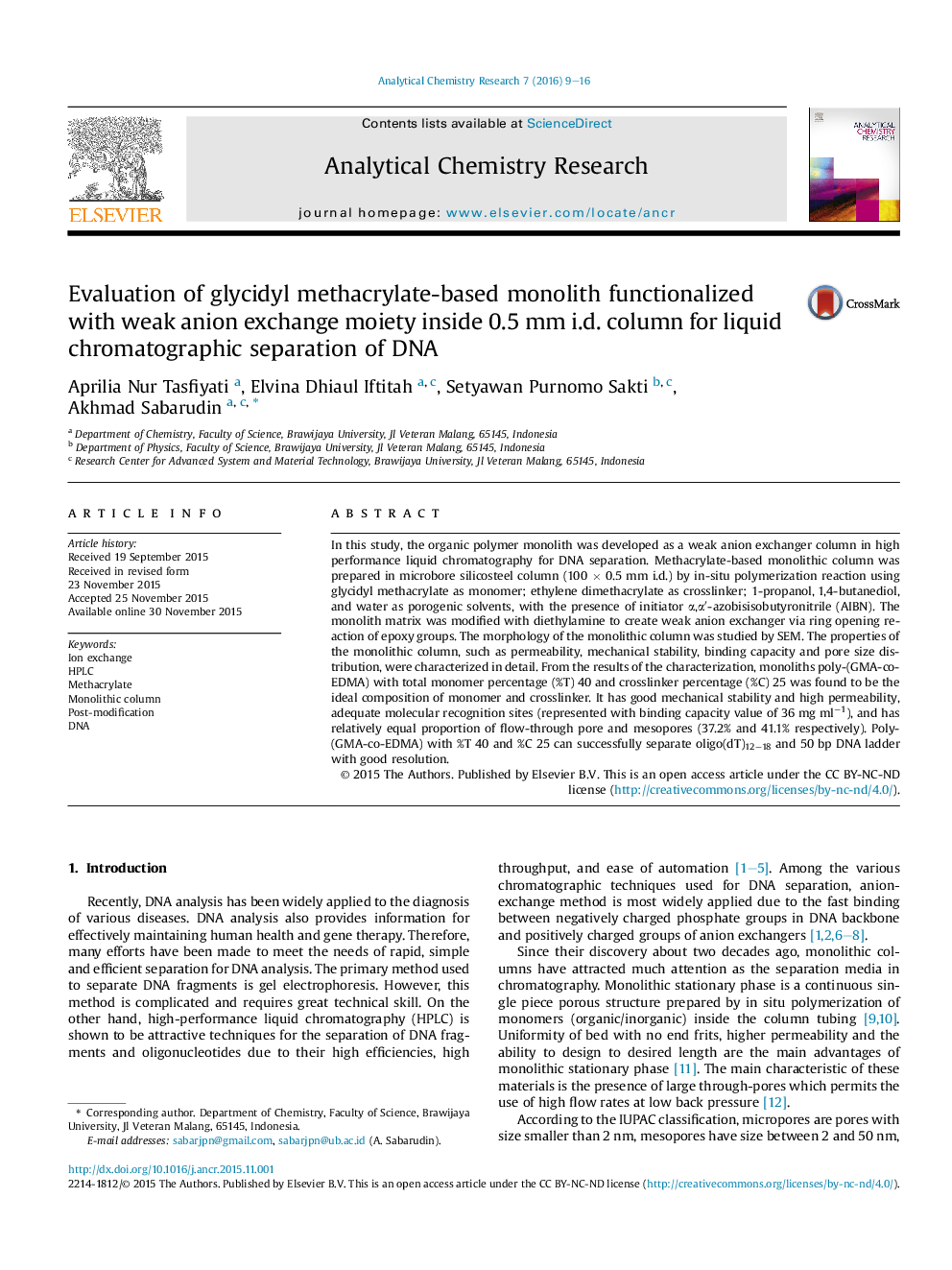| Article ID | Journal | Published Year | Pages | File Type |
|---|---|---|---|---|
| 1177923 | Analytical Chemistry Research | 2016 | 8 Pages |
•Preparation of anion exchange monolithic column.•The use of microbore columns with inner diameter 0.5 mm.•Capability to perform DNA fragments separation with simple linear gradient elution.
In this study, the organic polymer monolith was developed as a weak anion exchanger column in high performance liquid chromatography for DNA separation. Methacrylate-based monolithic column was prepared in microbore silicosteel column (100 × 0.5 mm i.d.) by in-situ polymerization reaction using glycidyl methacrylate as monomer; ethylene dimethacrylate as crosslinker; 1-propanol, 1,4-butanediol, and water as porogenic solvents, with the presence of initiator α,α′-azobisisobutyronitrile (AIBN). The monolith matrix was modified with diethylamine to create weak anion exchanger via ring opening reaction of epoxy groups. The morphology of the monolithic column was studied by SEM. The properties of the monolithic column, such as permeability, mechanical stability, binding capacity and pore size distribution, were characterized in detail. From the results of the characterization, monoliths poly-(GMA-co-EDMA) with total monomer percentage (%T) 40 and crosslinker percentage (%C) 25 was found to be the ideal composition of monomer and crosslinker. It has good mechanical stability and high permeability, adequate molecular recognition sites (represented with binding capacity value of 36 mg ml−1), and has relatively equal proportion of flow-through pore and mesopores (37.2% and 41.1% respectively). Poly-(GMA-co-EDMA) with %T 40 and %C 25 can successfully separate oligo(dT)12–18 and 50 bp DNA ladder with good resolution.
Graphical abstractFigure optionsDownload full-size imageDownload as PowerPoint slide
